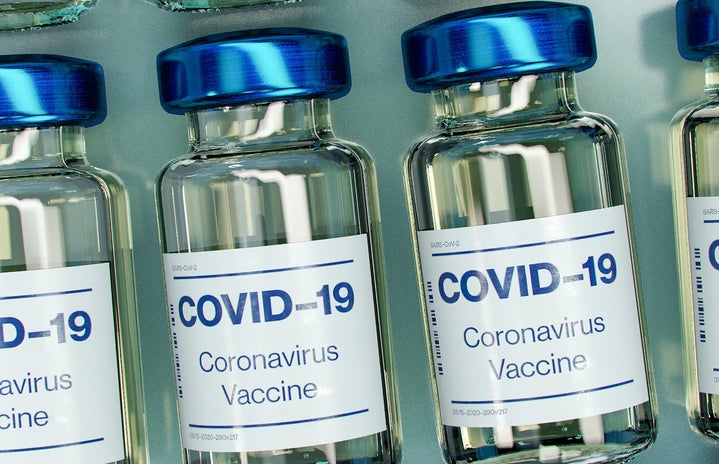After an overwhelming year filled with anxiety and fear regarding COVID-19 and the possibility of catching it, vaccines have been developed and are being distributed around the world. I know I’m not the first to express relief over being able to get a vaccine at this point in time. Seeing as the U.S. was not necessarily a world leader in virus control, it’s comforting to see that our vaccine rollout tells a different tale. While people didn’t actually stop travelling during the pandemic, especially Americans, it seems that people are eager to get back to their travels, whether they be domestic or international. As such, airlines are more and more heavily trafficked each week as greater numbers of people get vaccinated (and as more people get tired of staying home.) This is great for airlines and tourism industries all over the world, but I’m still concerned.
While vaccinations in the U.S. progress relatively fast, they are moving slowly in much of the world. Europe has been markedly slow to vaccinate people, proportional to their population. Many African, Asian, and Latin American countries are moving even slower and underdeveloped/less wealthy nations are not slated to receive any vaccines until 2022 or later, some not even projected to receive them until 2023 or 2024. This, like many other issues, may appear to be non-issues to many of us in wealthy countries because we’re not in close geographic proximity. Most people probably don’t even think about traveling to African countries outside of Egypt or Morocco, nor do they realize there’s more to Asia then popular tourist destinations.
The issue I see is, in part, traveling to some of these popular tourist destinations. Countless Pinterest-worthy destinations are located in countries that won’t be among the first to vaccinate people, nor will they have as easy access to vaccines as we’ve had in the U.S. That’s all fine and dandy until people visit these countries and potentially bring back the virus, or different strains of the virus, to people who haven’t been vaccinated yet for whatever reason. The entire point of mass vaccinations is to achieve herd immunity so that the virus “dies out” and stops affecting people at the capacity it has over the past year. An influx of international travel to the countries that haven’t received enough vaccines to achieve herd immunity could wreak havoc on our progress.
Another facet of the global vaccination campaign that worries me is the development of new variants. The virus has only circulated internationally for about a year, and in that time multiple concerning variants have emerged. Overall, their impacts have been devastating, though nowhere near “Black Death” levels of population decimation. Granted, modern medicine is much more effective and we understand the spread of disease and the science behind it better. That being said, it’s been made pretty clear that people aren’t willing to accept science and follow scientific guidelines to save lives. Here’s where my concerns come in: if the global vaccination rate is this slow and some countries don’t receive vaccinations for another two or three years, that allows even more variants to emerge and adversely affect countries that are likely disproportionately disadvantaged, whether that be by water scarcity, poverty, natural disasters, civil unrest, or climate change. Geography doesn’t limit the spread of disease, though, since an increase in international travel is likely to include these countries to some capacity. Of course, there are still quarantines, mandatory testing in various places, and other precautions, but this does not mean that COVID-19 is now or will be gone forever.
I’m not just worried about other people contracting COVID-19 and other countries suffering, though that’s a huge part of my concern. Not only would that mean people without easy access to medical care (in facilities equipped to handle this) would suffer, it would also lead to widespread economic fallout with decreased participation on the part of disease-stricken people and families. We’ve seen it firsthand, but the biggest difference is the access to adequate medical care. Not only would this occur in many countries worldwide, but it also brings into the equation the possibility of newer, more dangerous variants. Like the B.1.1.7 variant, these could be more transmissible, not to mention harder-hitting than the original strain. It’s unlikely that these variants would be confined to their countries and regions of origin, so we are brought to the question of how far they could spread. The answer to that question can only be hypothesized for now, but there is no reason to let it get that far. There is potential for it to once again ravage the world and put everything on hold. We know our vaccines are very effective against the original and less harmful strains, and we know that at least the Johnson and Johnson vaccine is effective against the newer variants. What we don’t know is when a new variant could render our vaccines useless. We also don’t know if that will even happen — however, after everything that we’ve experienced in the past year, the only logical step forward is that of prevention.
I won’t say that I think any of this will happen, or that it’s even very likely. Based on the past year, however, I think that there’s room for concern and there’s no reason for us to assume that the worst is over just because we want it to be. Sure, we’ll be able to do more this yeat than last, and guidance will change gradually, but there are still reasons for us to be cautious about how we move forward and how the world does as a whole. Currently, every country’s pace for recovery and moving out of the pandemic is very different. At the most basic level, we can’t do anything about the speed at which other countries vaccinate. We cannot personally discuss our opinions with world leaders and convince the leaders of other countries that they need to move faster. There are various problems that make this impossible in many countries. What we can do, though, is get our vaccines as soon as they are available to us. So far, it seems that once our supply outpaces our demand, the U.S. supply of vaccines will be made available to other countries, a list of which we can only hope includes every country that is not slated to have access to them for over a year from now.
I’m aware that I’ve just thrown out a heap of negative information and it doesn’t necessarily inspire confidence, but the main point of discussing these issues is to instill a global mindset, rather than a U.S. centric one. The other side of sharing this information is not to put a negative spin on a really great discovery, but to make sure that people are still appropriately cautious and aware of various outcomes.




